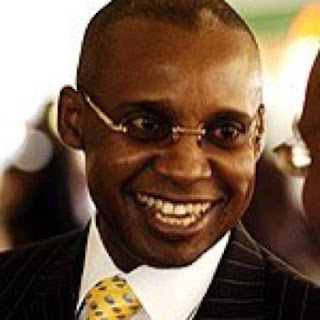Tanzania and Zambia in a pioneering ROT
 |
One of the many Bridges |
Tanzania and Zambia have done it again. Back in the 1960s, they jointly conceived a 1860KM rail link between the two countries. That was the longest Railway line in Africa. For countries that were hardly a decade into independence, that was a bold dream.
They approached the West and the World Bank for financial
support but the project was rejected as “economically unviable.”
Undeterred, they jointly approached China to build a railway
line linking the two countries. China agreed to a US$406 million interest-free
loan to be paid in 30 years. For China, this was the largest foreign aid project
in the cold war era, for China itself was struggling.
In 1968, work on the turnkey project began. The feasibility study debunked the West’s
theory. In 1970, construction began and was completed in 1975, two years ahead
of schedule. The line runs through a difficult terrain with mountain ranges,
rivers, and the Rift Valley. It comprises 320 bridges, with a total length of
more than 4 kilometers, 23 tunnels totaling 8.7 Kilometers, and 225 culverts
totaling 11.7 kilometers. After a year’s trial runs, TAZAM was officially
handed over to the client in 1976.
 |
| TAZAM Passenger Train |
this month, the
two countries jointly inked a 30-year PPP contract to refurbish the same line. This is also another first for the two countries
since Joint PPP projects are rare in the world.
The Tanzania Zambia Railway, known by the moniker, TAZAM also
known as Independence Rail, will be refurbished at a cost of US$1.4 billion PPP.
The Chinese Firm, China Civil Engineering and Construction Company (CCECC), is
the contractor. The firm is returning to the project it built 50 years ago.
The Railway line was meant to open a new link for Zambia’s
international trade through Tanzania’s Port of Dar-es- Salaam. Then,
Zambia was surrounded by hostile white-ruled South Africa, Rhodesia, (Zimbabwe),
and South West Africa (Namibia).
Her trade route through these apartheid- ruled territories
was vulnerable as Zambia and Tanzania hosted freedom fighters from these
territories. That is why Tanzanians and Zambians called it “independence Rail.”
The West refused to fund the project, forcing Zambia and
Tanzania to approach China, which was also struggling, to bail them out. China
did that at whopping US$406 million. At current dollars, the project was worth
$3.26 billion, experts say.
To some extent, the
West was right, the Railway, designed to carry five million tons of freight has
never hit its peak mainly because Zimbabwe, Namibia, and South Africa gained
their independence, thus competing business away from TANZAM, as they were
nearer the Atlantic sea, the main export route to the West.
Consequently, it has been struggling, almost falling into a
state of disrepair. China has all along stood by the line, supporting it with
rolling stock and maintenance.
However, now, China is the second largest economy in the
world and a critical consumer of Copper, Cobalt, and Manganese that are
available in Zambia and neighboring D.R. Congo. Its main trade route is the
Indian Ocean.
Consequently, the Railway line is geoeconomically critical
for China. For both Zambia and Tanzania,
with growing populations and expanded GDPs, the project is a viable economic
asset. Presidents Julius Nyerere and Kenneth Kaunda were right after all, just
thinking ahead of the West.
Now CCECC is returning to the project 50 years later to
rehabilitate, refurbish, operate, and transfer (ROT). ROT is a business model
exploited by governments to leverage private sector capital and expertise to refurbish
dilapidated public infrastructure. It is a PPP model on existing
infrastructure, hence the acronym, ROT.
In the deal, CCECC will invest $1.4 billion in rehabilitation
and refurbishment of the 1860KM line from Dar-Es-Salaam to Kapiri Mposhi, near
Zambia’s copper belt.
Specifically, it shall
involve refurbish the entire line, upgrade major workshops, and maintenance.
CCECC will also bring in 34 locomotives, 16 passenger coaches, and 760 wagons-
effectively breathing new life to the line. This will take three years. Then it
will run the line for 27 years.
Analysts term the deal as a well-thought out business model
that will fast-track mineral exports to the Indian Ocean by passing the crowded
ports in South Africa.
Given that China is an economic powerhouse, the route is head
and shoulders above competing routes, namely Nacala and Lobito Corridors. The
line is unlikely to be underutilized owing to Chinese business.
An efficient TAZAM
will also open markets for Tanzanian and Zambian businesses in the region and
beyond.
In fact, both governments are excited about the deal owing to
its potential impact on their economies.



Comments
Post a Comment